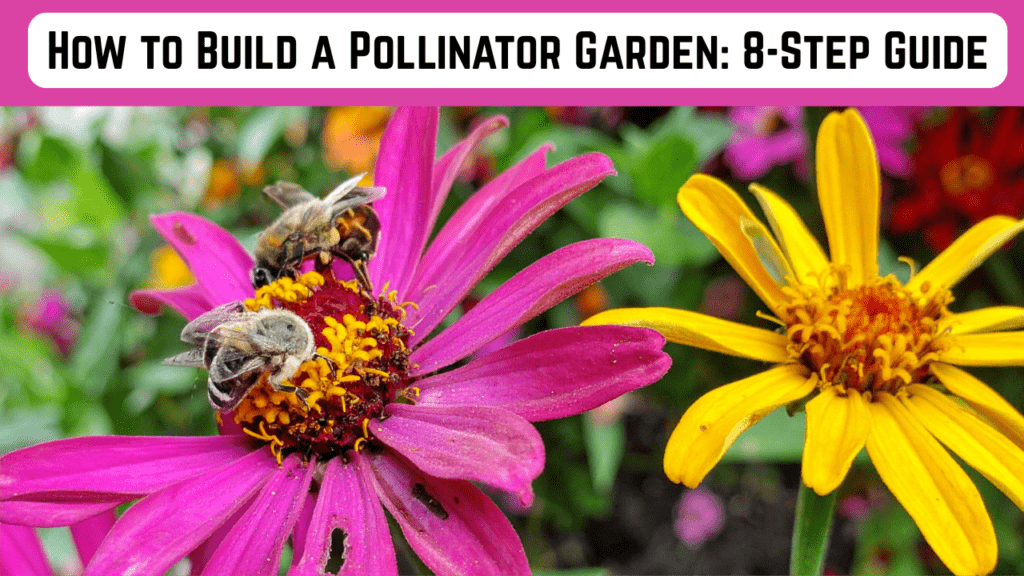
Have you ever watched a butterfly flutter from flower to flower or have you seen a bee dive into a bright bloom? These little moments are an indication of a healthy planet. Pollinators such as bees, butterflies, hummingbirds and even the beetles are an enormous part of keeping our ecosystems in bloom — and our gardens growing strong.
Because the thing is you don’t need acres of land to help them on their way. With little effort, you can transform your balcony, back yard or just a handful of pots into a buzzing, colorful paradise for pollinators.
In this article, we will show you how to create a pollinator garden step by step using natural ways of landscaping, indigenous butterflies plants, and smart design in the tropical climates too!
🌼 Step 1: Understand Why Pollinators Need You
Pollinators are disappearing fast because of the usage of the pesticides, habitat loss, and climate change. So by creating a pollinator garden, you give them food, shelter, and also a safe space to breed. Think of it as your way of saying “thank you” to our nature — and in return, you are getting a more vibrant garden and a better fruit and vegetable yields.
🌞 Step 2: Pick the Perfect Spot
Pollinators love the sun — it warms their bodies and helps them fly. So find a spot that receives at least 6–8 hours of sunlight daily.
If you are working with a balcony or terrace, select corners that are shielded from heavy wind. Grouping pots is that it can create a bit of a microclimate where bees and butterflies will feel protected. Even a windowsill garden can help if sunlight is abundant.
🌿 Step 3: Prepare the Soil
Healthy soil equals healthy plants — and the pollinators know the difference!
Clear the weeds or grass where you’ll be working first. If you are planting in a container, use a combination of garden soil, compost and little cocopeat to retain moisture.
You can also try the “lasagna gardening” method: layer cardboard, compost, and organic material over your existing soil. It naturally inhibits weeds and encourages good ground conditioning with minimal digging.
Tip: Don’t use chemical fertilizers — pollinators are vulnerable to toxins. Compost or vermicompost gives your plants the boost they need, naturally.
🌸 Step 4: Choose the Right Plants
This is the fun part! What plants you choose determine who comes to your garden. The key is diversity — mix colors, shapes, and bloom times so something is always flowering.
🌺 Go for Native and Seasonal Plants
Native plants are more likely to keep up with the weather and soil conditions in your region, making them easier to grow — plus pollinators already know what to do with them!
If you live in India, or other tropical climates try:
- Marigold (Tagetes) – Brings the bees and deters pests.
- Cosmos and Zinnia – These are butterfly favorites.
- Sunflower – excellent nectar and pollen source.
- Basil (Tulsi), mint, thyme, and rosemary – These fragrant herbs are attractive to bees and hoverflies.
- Milkweed (Calotropis) – essential for monarch butterflies.
- Ixora and hibiscus – Hummingbirds and butterflies are drawn to them.
- Try to group the same species together becaause the pollinators like to stay longer when they find plenty of the same flower type in one spot.
💧 Step 5: Plant from Seeds or Seedlings
- If money is tight then you can start from seed. Scatter the seeds mixed with a bit of sand so that you can see where they fall. Cover lightly with soil and water gently.
- If you don’t have patience, you can rely on nursery plants for instant color. They will bloom faster and attract pollinators immediately.
- Remember: patience pays off. Some perennials like milkweed or lavender might take a few months to bloom, but once they do, they’ll keep coming back year after year.
Also read:
Planting Dogwoods? Follow This & Avoid these 5 Blunders
Ultimate Guide to Rubber Plant Care: Indoor & Outdoor Tips
🏡 Step 6: Create Shelter & Water Sources
- Pollinators they don’t just need the nectar, they also need the rest stops and nesting places.
- Add a bee hotel (a small wooden box with drilled holes) or a bundle of hollow twigs.
- Leave some bare soil patches in a corner for ground-nesting bees.
- Provide a shallow water dish with stones or the marbles, so that the insects can drink without drowning.
- Even a little water source on your balcony helps to keep the heat at bay.
Step 7: Skip the Chemicals
- No matter how tempting, always you must try to avoid pesticides and chemical sprays. They not only harm the pests but also the very pollinators you’re trying to attract.
- Instead, try these natural pest controls:
- Neem oil spray (1 teaspoon in 1 liter of water with mild soap).
- Companion planting: marigolds deter aphids, and basil protects tomatoes.
- Handpick larger pests or wash them off gently with water.
🌻 Step 8: Maintain and Enjoy Your Mini Ecosystem
You must remember to water your garden from time to time, particularly when it’s dry. Deadhead (remove faded blooms) to encourage the new flowers. Try to leave some of the old stems or dried seed heads because they also provide shelter for the overwintering insects.
And most importantly, observe. You’ll soon notice a patterns maybe a particular butterfly prefers the zinnias or a certain bee visits your basil daily. These times remind you that your garden is more than decoration; it’s part of a living, breathing system.
🌿 Pro Tips for Successful Pollinator Garden
✅ Choose plants that bloom in different seasons — early spring to late fall.
✅ Add fragrant herbs near seating areas to attract pollinators (and enjoy the aroma).
✅ Mix annuals and perennials for instant color and long-term growth.
✅ Be patient — it can take a few months for pollinators to discover your garden.
🌼 Final Thoughts
Creating pollinator gardens is not just a weekend project — it’s a gift to nature that keeps on giving. Each and every flower you plant feeds the little beings that keep our food system in tune. Whether you have a large backyard or just a pair of pots on your balcony, it’s up to you — and beneficial for everyone involved — to make that difference.
So grab a trowel, get your fingers dirty and start small. The time will come soon, your garden will be aflutter — bees hovering and butterflies flitting about, flowers blooming brighter than ever. 🌺
🌱 Frequently Asked Questions (FAQs)
1. What are the best flowers for a pollinator garden?
Marigolds, zinnias, cosmos, sunflowers, lavender, and milkweed are the top choices. It will be better for you to choose local or native varieties for better results.
2. Can I grow a pollinator garden on my balcony?
Absolutely! Use the pots or the railing planters, ensure sunlight, and group flowering plants close together. Because even a few pots can attract butterflies and bees.
3. How do I attract pollinators without chemicals?
Use the organic compost, neem oil spray, and companion planting. Avoid chemical fertilizers or pesticides completely.
4. Do pollinator gardens need daily watering?
Young plants should be watered with some regularity until they have developed roots. Thereafter, water 2–3x per week but depending on season and soil type.
5. How long before pollinators visit my garden?
Typically within a few weeks to months — once flowers begin blooming, they will find you!
💬 Final Tip:
Nature will repay patience and care. So maintain an organic garden, wild and varied and full of love — then the pollinators will pay you back with life, color and magic.

